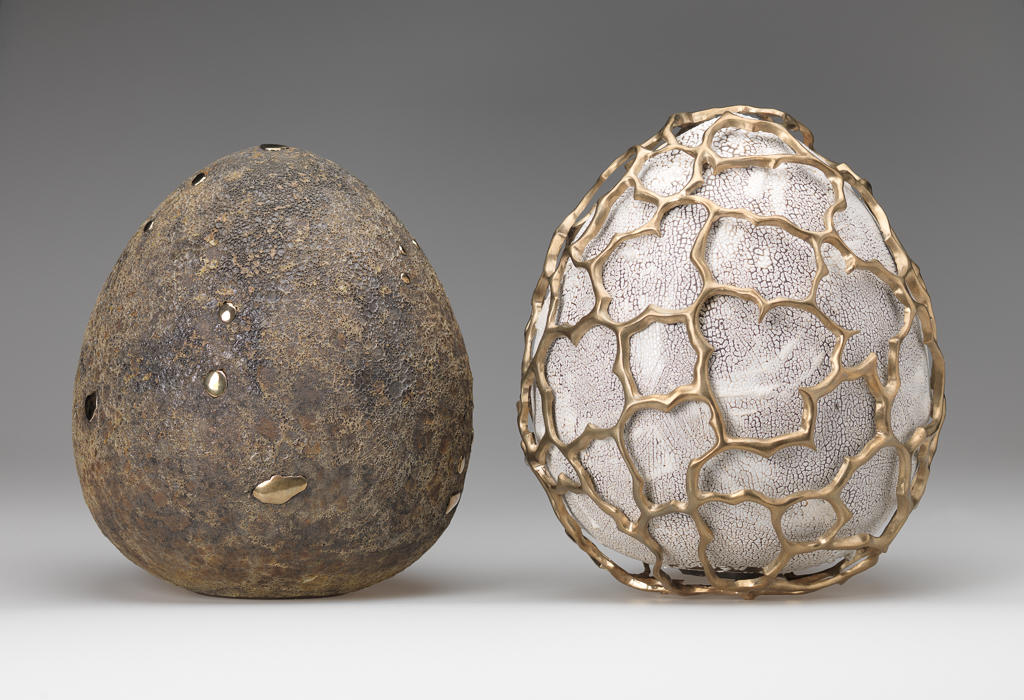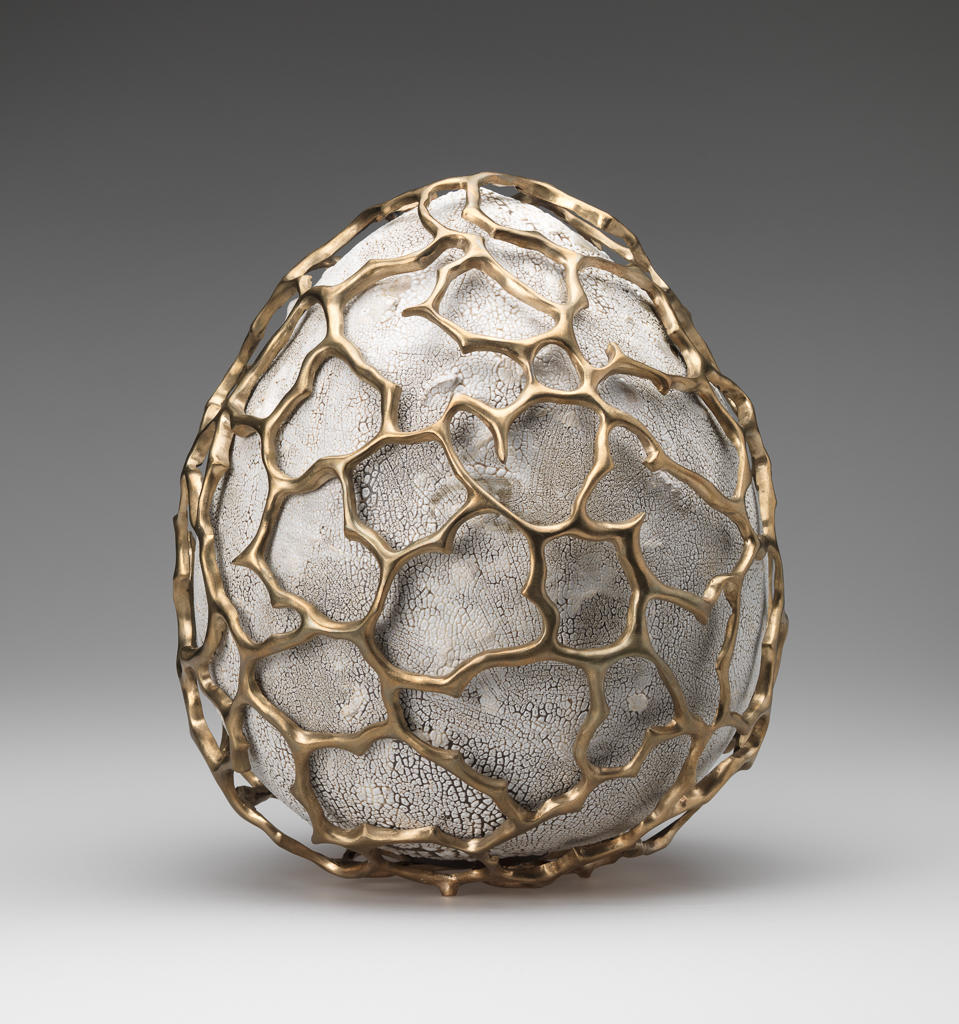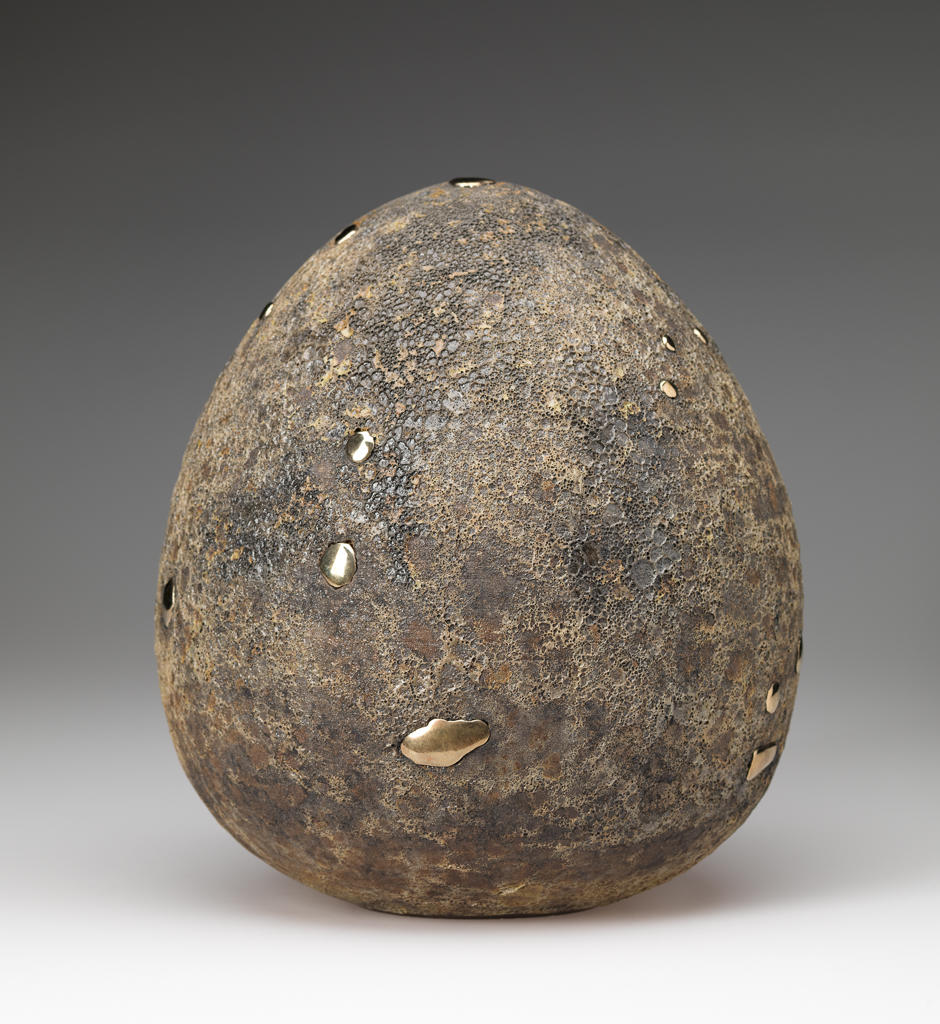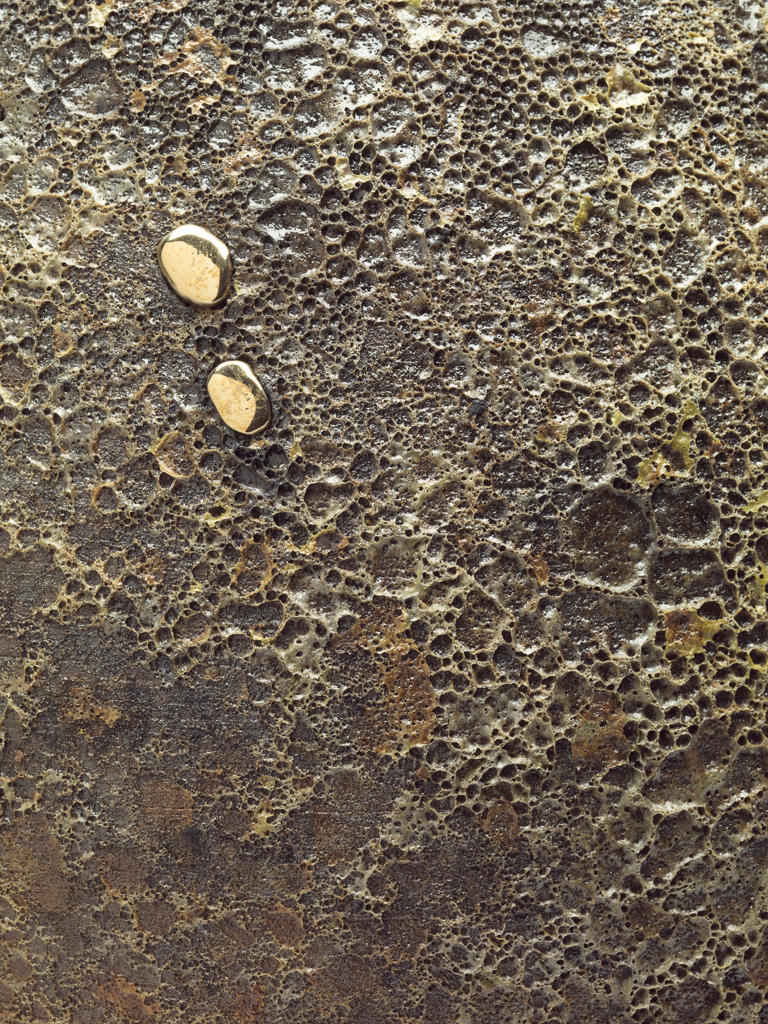The Museum recently acquired Huevos de Los Angeles, a collaborative work by two RISD alumni, Adam Silverman and David Wiseman. Adam graduated with a BArch in architecture in 1988 and David graduated with a BFA in furniture design in 2003; both have Los Angeles–based studios. Here the artists describe how they created “eggs” to rival the most coveted variety.
Adam Silverman:
On a flight from L.A. to Miami for the Art and Design fair in December 2014, I had an oxygen-deprived idea: in my regular practice I often make shapes that are egg-ish, but for this idea, the egg reference would be much more literal in intention. The reference would be a Fabergé egg, the ridiculously ornate gifts of 19th century Russian tsars. In the case of my idea, the aesthetic of the eggs would make the ghosts of the Russian tsars roll in their graves.
The goal was a post-punk 21st-century post-industrial Los Angeles version. To complete the vision I needed a collaborator who works with materials beyond clay, preferably in metals, but not too precious. David Wiseman was the first person who came to mind. I like him and his work a lot. We share some DNA from RISD, so it seemed natural.
When I was in Miami, and by complete coincidence, I was asked by Michael Reynolds, Wallpaper* U.S. editor, if I wanted to propose something for the Wallpaper* Handmade exhibition in Milan in April and if there was anyone I wanted to collaborate with. I sheepishly told him about my airplane idea, and dropped David’s name into the mix … Michael loved it. When I got back to L.A. I pitched the idea to David, and thankfully he didn’t make me feel like an idiot. We had a couple of meetings at each of our studios (which are five minutes apart) to talk about different ideas, materials, processes, etc., and the whole process was pretty casual and fun.
David Wiseman:
Adam brought the first egg over to my studio. It had a whitish glazed texture that seemed like an organic fossil encrusted with the residue of small barnacles or creatures unearthed after a millennium. I knew I really wanted to see how brushed bronze would contrast not only in tone and texture but also in process. Where Adam’s ceramic felt geological and primeval to me, I wanted my bronze to feel handmade and labored.
The second egg then made its way to the studio a week later. It was a darker mottled green and brown—almost burnt—cratered egg, with gauged-out holes seemingly randomly sized and spaced. Whereas the first egg caged the ceramic within a web of bronze, we thought we’d take the opposite approach and inlay the bronze, so that it appears to be escaping through the orifices. Each bronze piece was then polished to heighten the textural differences.
Adam Silverman:
In the end the project came together really nicely, and feels in many ways like it could be just the beginning of a bigger series of eggs, or these could be the only two pieces that we make. The House of Fabergé made only about 50 eggs and only 43 survive, so maybe we should make 44 Huevos de Los Angeles so we have the last word on this egg business.




